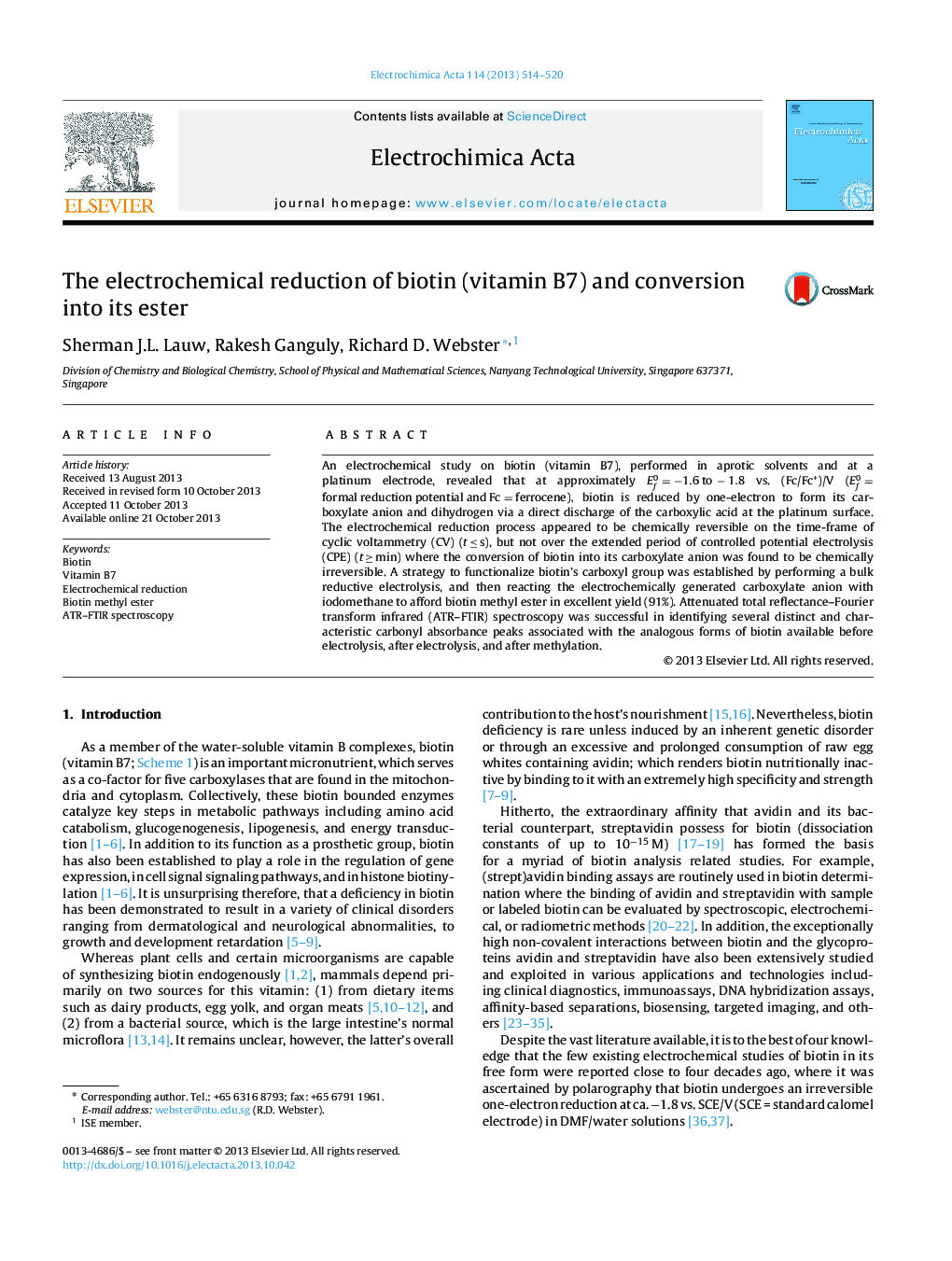| Article ID | Journal | Published Year | Pages | File Type |
|---|---|---|---|---|
| 186493 | Electrochimica Acta | 2013 | 7 Pages |
•Biotin can be reduced electrochemically, by one-electron, at a platinum electrode.•The reduction likely follows a direct discharge mechanism of the carboxyl group.•Electrochemically generated biotin carboxylate was reacted with iodomethane (91%).•ATR–FTIR characterization of biotin, its carboxylate anion, and its methyl ester.
An electrochemical study on biotin (vitamin B7), performed in aprotic solvents and at a platinum electrode, revealed that at approximately Ef0=−1.6 to −1.8 vs. (Fc/Fc+)/V (Ef0=formal reduction potential and Fc=ferrocene), biotin is reduced by one-electron to form its carboxylate anion and dihydrogen via a direct discharge of the carboxylic acid at the platinum surface. The electrochemical reduction process appeared to be chemically reversible on the time-frame of cyclic voltammetry (CV) (t ≤ s), but not over the extended period of controlled potential electrolysis (CPE) (t ≥ min) where the conversion of biotin into its carboxylate anion was found to be chemically irreversible. A strategy to functionalize biotin's carboxyl group was established by performing a bulk reductive electrolysis, and then reacting the electrochemically generated carboxylate anion with iodomethane to afford biotin methyl ester in excellent yield (91%). Attenuated total reflectance–Fourier transform infrared (ATR–FTIR) spectroscopy was successful in identifying several distinct and characteristic carbonyl absorbance peaks associated with the analogous forms of biotin available before electrolysis, after electrolysis, and after methylation.
Graphical abstractFigure optionsDownload full-size imageDownload as PowerPoint slide
